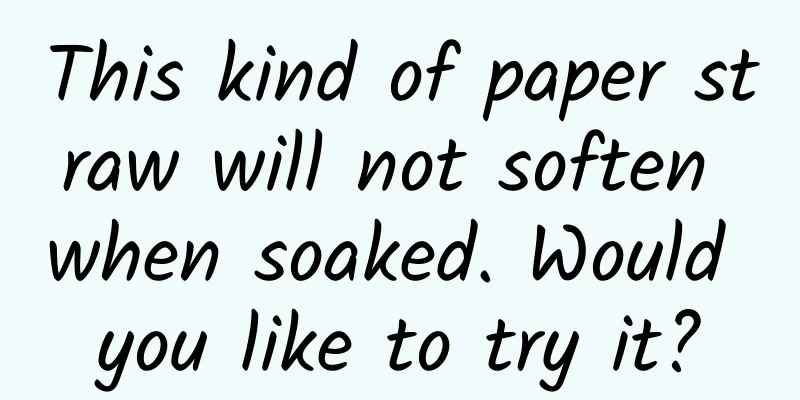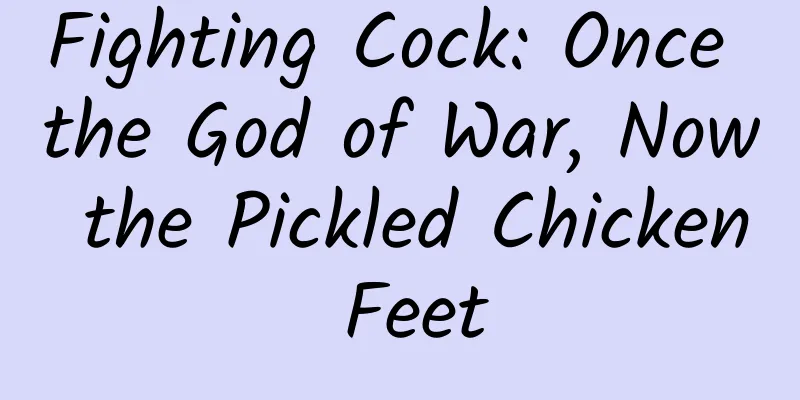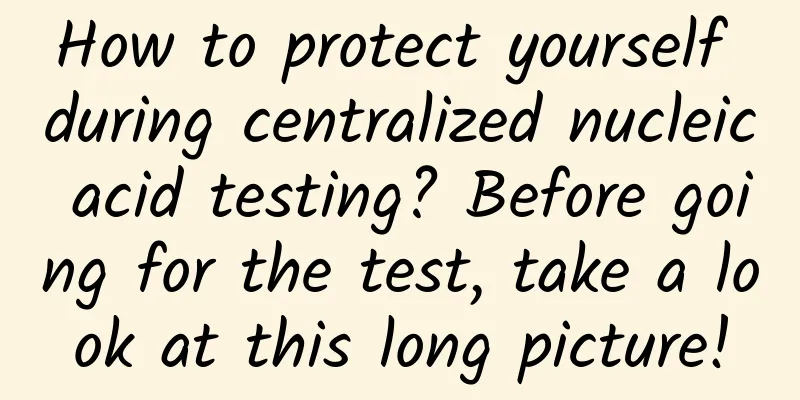This kind of paper straw will not soften when soaked. Would you like to try it?

|
Produced by: Science Popularization China Author: Guo Fei (Yantai University) Producer: China Science Expo If you ask me what is the biggest pain when drinking milk tea, besides worrying about gaining weight, it is the paper straw that becomes soft after being soaked in milk tea for a long time. Fortunately, this problem can be solved. Recently, Korean scientists published a study in the journal Advanced Science. They developed a 100% biodegradable and environmentally friendly paper straw that performs better than traditional paper straws, can be mass-produced, and does not affect its function due to moisture absorption. The paper straws we use now are not actually made entirely of paper. They are usually covered with a moisture-proof coating on the surface. Most of these coatings are not 100% biodegradable. Paper straws with the newly developed moisture-proof coating are 100% biodegradable, which is the most environmentally friendly of all. Today we will talk about popular science topics related to straws, why plastic straws are destined to be replaced by paper straws, what materials the moisture-absorbing coatings are made of, and what’s so great about the latest achievements. Analyzing from multiple angles, why is the elimination of plastic straws an inevitable trend? Paper straws and plastic straws are two common types of straws. Although they have different usage experiences, from various perspectives, plastic straws will eventually be eliminated. From an environmental perspective, paper straws are a natural, degradable product that can be quickly decomposed after being discarded, thus not placing an additional burden on the environment. However, most plastic straws are non-degradable and are likely to remain in the environment for decades, causing environmental pollution. Therefore, from an environmental perspective, paper straws are more desirable. Common paper straws (Image source: Wikipedia Author: Asurnipal) From a health perspective, plastic straws are likely to release harmful substances when heated or in contact with hot drinks for a long time. In comparison, paper straws are less likely to release harmful substances. From the perspective of user experience, paper straws have a light feel and give people a fresh and natural experience. Although plastic straws seem to be more convenient to use in some situations that require strength, considering the various disadvantages of plastic straws, it is obviously not appropriate to use them. PLA straws, which are also environmentally friendly, can help at these moments and serve as a substitute for plastic straws. A painting from 1882 shows a couple sharing a drink through a straw. (Image source: Wikipedia Author: Vilhelm Rosenstand) What materials can be used as moisture-proof coatings? We know that paper is made of fibers from plants, so the inside of the paper is actually full of holes and is a material that absorbs water very easily. When paper straws are not treated with moisture-proof treatment, they can easily absorb liquids into the surface, thus affecting their strength and overall appearance, and also affecting the use of the straws. Therefore, when making paper straws, a layer of moisture-proof coating is often applied to the surface to prevent the straws from getting wet. Anti-moisture coatings are usually made of some food-grade plastics. They will not contaminate the liquid at low temperatures. They can also ensure the strength and overall appearance of the straw and enhance our user experience. Reusable metal straws Image source: Wikipedia There are many materials that can be used as moisture-proof coatings. Here are some common representatives. 1. Polyethylene (PE): Food-grade PE can be made into very thin films with good moisture-proof and waterproof properties. 2. Polyvinyl alcohol (PVA): PVA is a water-soluble polymer that only dissolves in hot water and is non-toxic to the human body. It has excellent moisture resistance and oil resistance and is currently widely used to make moisture-proof coatings for paper straws and fresh-keeping packaging during food transportation. 3. Oxidized starch: Oxidized starch is a natural moisture-proof coating material that can be extracted from starch. It has good moisture absorption and air permeability and is often used for moisture-proof treatment of paper packaging materials such as paper, cartons and paper bags. 4. Wax: Wax is a natural material that can be used to make waterproof and oil-proof coatings. When making the moisture-proof coating of paper straws, edible wax is usually used to ensure that there is no contamination of the liquid. 5. Polylactic acid (PLA): PLA is a biodegradable plastic made from renewable plant materials (such as corn starch, etc.) and does not contain petrochemical raw materials. Polylactic acid has good transparency, strength and processability. Compared with traditional moisture-proof coating materials, polylactic acid has better biodegradability and renewability, and will not pollute the environment. However, as a coating material, its moisture-proof effect and durability may not be as good as other coating materials. In addition, since the manufacturing cost of polylactic acid is relatively high, factors such as cost and performance need to be considered comprehensively in practical applications. Different moisture-proof coating materials have different characteristics and applicable scopes, and need to be selected according to specific product requirements and usage environments. But I think you must have discovered that although we have achieved a big step in environmental protection from plastic straws to paper straws, the current paper straws still cannot escape the fate of needing to use various types of coatings. The coating process consumes a certain amount of resources and energy, and the presence of the coating will greatly affect the degradability of the straw. Therefore, if we can develop a renewable and degradable hygroscopic coating, it will be another great improvement in environmental protection. Cold drinks with straws are a beautiful summer landscape (Image source: Wikipedia Author: Martin Belam) What’s so great about the newly developed moisture-proof coating material? The latest results of the Korea Institute of Chemical Technology show that a lower-cost, 100% biodegradable environmentally friendly paper straw is expected to enter the market. How did this paper straw achieve 100% biodegradability? In fact, it took a lot of effort in the coating. They created a new moisture-proof coating by adding a small amount of cellulose nanocrystals to polybutylene succinate plastic. Because cellulose nanocrystals are the same main component as paper, this coating can firmly adhere to the surface of paper. Moreover, the various components that make up the coating are biodegradable. It seems that the coating material that evenly and firmly covers the surface of the straw gives the straw the property of not being easily wet; the environmentally friendly and degradable material also allows it to completely decompose within a short time after being discarded. In addition to the superiority in decomposition, the paper straws with the new coating are also excellent in terms of user experience. Studies have shown that the new environmentally friendly paper straws can remain intact in both cold and hot drinks, and will not get wet even when in contact with liquids for a long time, stirring water, tea, milk and other beverages. In contrast, traditional paper straws will bend severely when the weight reaches 25 grams after being soaked in cold water at 5°C for 1 minute, but even under the same conditions, the new paper straws will not bend when the weight exceeds 50 grams. In addition, the new straws also showed good biodegradability in the ocean. Experimental results showed that after ordinary plastic straws and polylactic acid straws were immersed in seawater for 120 days, their total weight only decreased by 5%. However, after being immersed in seawater for 60 days, the weight of the new straws was reduced by more than 50%, and they could be completely decomposed after 120 days. Conclusion In short, as we pay more attention to environmental protection and sustainable development, plastic straws are bound to be completely replaced. With the development of technology, the cost and usage experience of paper straws will gradually be optimized, and they will also have more environmentally friendly characteristics. However, although we may have paper straws that are excellent in all aspects, or other alternatives in the future, if we can reduce the use of disposable products, it will be of greater help to the earth's environmental protection. Editor: Guo Yaxin |
>>: Chart丨Collection! Two Sessions Knowledge Handbook
Recommend
You suddenly tremble when you sleep, or you suddenly step on empty air in your dream...is it really your brain afraid that you will die?
The above is the question from @Lifire...
Baidu World Conference 2017: Multiple AI products and applications launched
On November 16, the 2017 Baidu World Conference w...
Toyota's Chinese factories partially shut down again, chip shortage will cause the automotive industry to lose more than $100 billion
Recently, there were reports that Toyota Motor on...
Advertising case of “Geshuixue” educational institution!
Due to the impact of the epidemic, the summer enr...
The "purple" in front of you is not purple? What kind of purple are you talking about?
Recently, Zhang Chaoyang mentioned a statement in...
"Anti-inflammatory diet" is popular! What are anti-inflammatory foods and pro-inflammatory foods? Save them now!
Expert in this article: Li Lin, PhD in Food Scien...
The domestic smartphone market has reached its ceiling, and patents have become the biggest concern for overseas expansion
After nearly four years of rapid development, the...
The latest news on pension adjustments for retirees in 2022: How much will it increase? Attached is the latest official adjustment notice
In recent years, the pensions of retired people i...
The advertising communication effect from Meituan’s “Kangaroo Ears” IP
In the public's mind, food delivery riders ar...
Lao Duan said: Traditional TV is to the left, online video is to the right
iQIYI's PPS has been leading the video websit...
A brief discussion on internal scrolling layout
1. What is inner scrolling layout? The so-called ...
Webb telescope: The mind-boggling details of its $10 billion construction
Seeing the first batch of color photos released b...
Learn the best practices of modern Android development in one article
Author: Wang Peng, Sun Yongsheng What is MAD? h...





![A comprehensive guide to APP promotion and operation knowledge [App market advertising charging model]](/upload/images/67cc3f08c34a3.webp)



